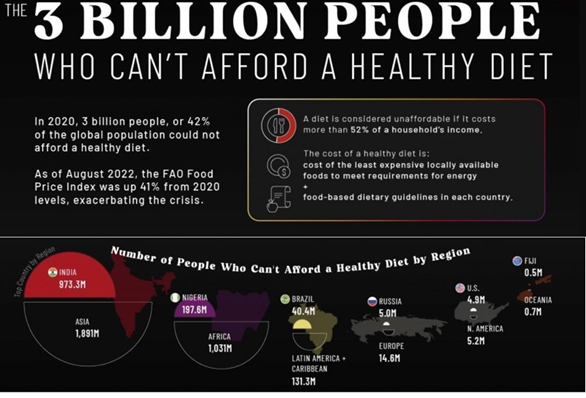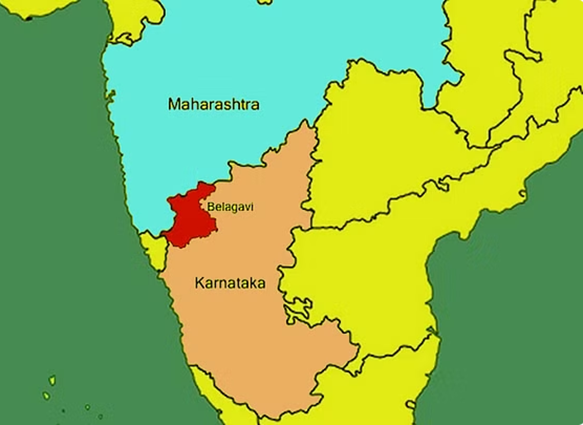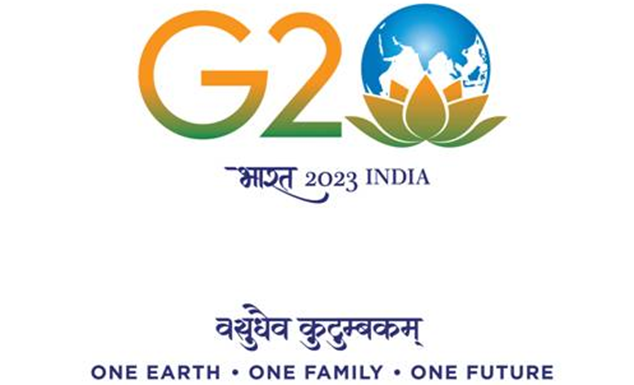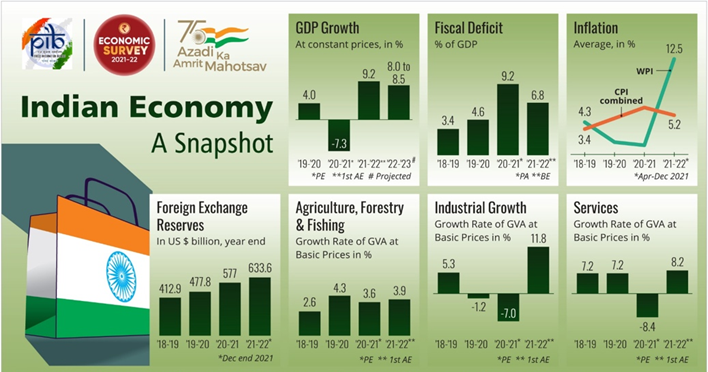Monday, 2nd January 2023
REMOTE VOTING FOR MIGRANTS - Edukemy Current Affairs
In News
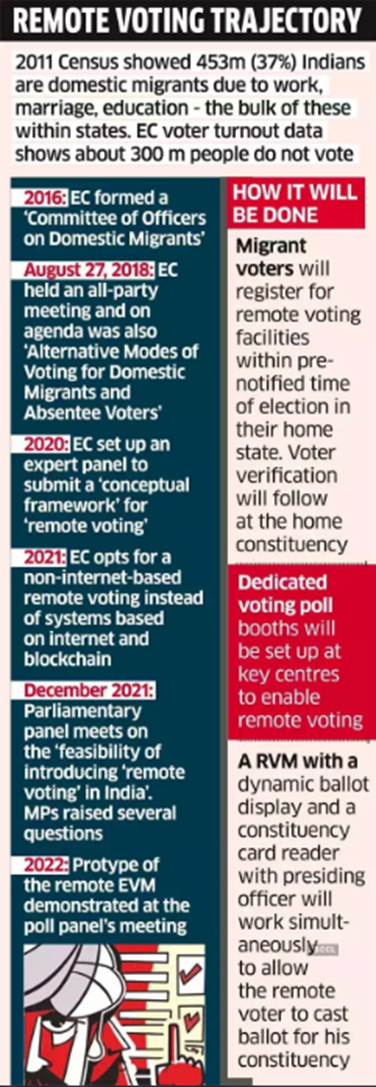 Election Commission (EC) has proposed a pilot project to enable remote voting by migrants in their home constituencies, from polling stations in the cities they work in.
Election Commission (EC) has proposed a pilot project to enable remote voting by migrants in their home constituencies, from polling stations in the cities they work in.
About the news:
- EC has collaborated with Electronics Corporation of India, a company under the Department of Atomic Energy, to come up with a prototype Remote Voting Machine (RVM), which is a modified version of the existing Electronic Voting Machine (EVM).
- The RVM is a standalone and non-networked system device which would have a dynamic ballot display that can change with the selection of different constituencies, instead of a paper ballot sheet.
- The system would have a device similar to the VVPAT so that voters can verify their votes. The units will save the number of votes for each candidate for each of the constituencies, to be tallied on counting day.
- RVM will be able to handle 72 constituencies in a single remote polling booth.
What is the need for remote voting?
- Stagnation in voter turnout is the primary reason for introducing remote voting. In the last three Lok Sabha polls, an average of one-third of registered voters sit out the elections.
- Migration-based disenfranchisemente. large chunk of the population is denied its franchise due to exigencies of work or lack of resources to travel.
- Differential voter turnout in different states and UTs due to internal migration.
- Reluctance in transferring voter id to the region of migration, as migrants plan to stay at the new locations temporarily.
What is the current proposal for remote voting?
- EC proposed using remote voting in State Assembly election as a pilot project, so that internal migrants within a state can cast their ballots.
- The special remote polling booths would be set up in different states when elections are on in the home state/constituency of the migrants.
- The remote voters will have to pre-register for the facility by applying online or offline with the Returning Officer of the home constituency. The special polling stations would then be set up in the places of current residence of the remote voters.
How will the security of the process would be ensured?
- The RVM, like the EVM, would not be connected to the internet, thus safe from network connected viruses and cyber-attacks.
- The RO in the remote location will load the symbols of candidates into the unit using a laptop which would also not be connected to the internet.
- Representatives of political parties and candidates would be invited to be present when the symbols are loaded onto the unit. The symbols would be visible on a display unit for all to see.
What are the challenges in introducing remote voting for migrants?
- Suspicious voting: It has been alleged that suspicious voting practices have been observed where around 10%-12% of the votes polled were cast in the last hour of polling.
- Lack of migrant database: EC itself had admitted that there was no migrants’ database available.
- Non-uniformity: Migrants are not a uniform and defined class, with fluid identities, locations and situations which would create a challenge for EC in identifying them.
- Eligibility & Qualification: EC has yet neither decided upon the eligibility of migrant voters nor the duration that a migrant has to stay outside the home to qualify.
- Affect elections and campaigning: Remote voting may theoretically provide an added edge to bigger parties and richer candidates who can campaign across the constituency and beyond.
Source:
https://indianexpress.com/article/explained/remote-voting-migrants-proposal-what-are-rvms-how-they-work-8352800/
City Finance Rankings 2022 - Edukemy Current Affairs
In News: Government launches pan-India rankings and competition to boost urban rejuvenation
About the News:
- Ministry of Housing and Urban Affairs (MoHUA) has recently launched ‘City Finance Rankings’ to advance India's urban revitalization efforts.
- The ministry has also launched ‘City Beauty Competition’ in an attempt to encourage and recognize the transformational efforts made by cities to create beautiful, innovative and inclusive public spaces.
- The cities will be evaluated on the basis of their strength across three financial parameters resource mobilization, expenditure performance and fiscal governance systems.
- All 4500+ cities / urban local bodies (ULBs) across all states/UTs will be encouraged to participate in the City Finance Rankings.
- Previously, the government has launched schemes such as Swachh Bharat Mission (SBM), Pradhan Mantri Awas Yojana (PMAY) for urban rejuvenation.
Major highlights:
- About: The pan-India ranking aims to evaluate, recognize and reward India’s Urban Local Bodies or ULBs) on the basis of the quality of their current financial health and improvement over time in financial performance.
- Evaluation:
- Indicators: The participating ULBs will be evaluated on 15 indicators across three key parameters, namely: (i) Resource Mobilization, (ii) Expenditure Performance and (iii) Fiscal Governance.
- Rankings: The cities will be ranked at the national level on the basis of their scores under four categories: (i) Above 4 million (ii) Between 1-4 million (iii) 100K to 1 million (iv) Less than 100,000.

- Importance:
- Income: Better rankings will leverage on growing realisation among local bodies which have healthy finances, transparent procedures all leading to increase in the land value for sustainable incomes.
- Better infrastructure: It will encourage and recognize the transformational efforts made by the cities and wards in India towards creating beautiful, innovative and inclusive public spaces.
- Reforms: Rankings will motivate city/state officials and decision makers, to implement municipal finance reforms.
- Foster competition: ULBs are expected to benefit immensely by participating in the fiscal rankings as they will be able to self-evaluate their own performance vis-à-vis other cities, which can help them in self-improvement in future.
- Future ready: It would create a conducive environment for developing a robust municipal finance ecosystem for promoting financially healthy, transparent and sustainable cities.
Source:
https://pib.gov.in/PressReleasePage.aspx?PRID=1887067
Triple test survey for OBC Quota
In News: The Allahabad HC recently ordered the Uttar Pradesh government to hold urban local body elections without reservation for OBCs.
About the News:
- The Court’s order to hold urban local body elections without OBC reservation was in the backdrop of the fact that the ‘triple test’ requirement for the quota had not been fulfilled.
- Following this, the state set up a commission which is a five-member body that would conduct a survey to ensure that the OBCs are provided reservation on the basis of the triple test, as mandated by the Supreme Court.
- This is the first time that the triple test exercise will be carried out in Uttar Pradesh.
Understanding Triple Test
The triple test requires the government to complete three tasks for the finalisation of reservations to OBCs in the local bodies which include:
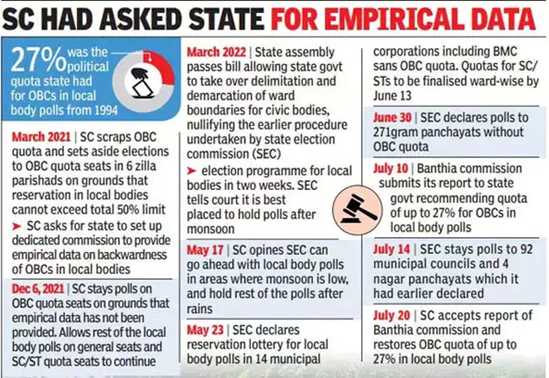
- To set up a dedicated commission to conduct a rigorous empirical inquiry into the nature and implications of the backwardness in local bodies;
- To specify the proportion of reservation required in local bodies in light of recommendations of the commission, so as not to fall foul of overbreadth;
- To ensure reservation for SCs/STs/OBCs taken together does not exceed an aggregate of 50 per cent of the total seats.
These triple tests/conditions were outlined by the Supreme Court in the case of Vikas Kishanrao Gawali vs. the State of Maharashtra and others, in 2021.
Procedure followed by UP preceding the order:
- The Urban Development Department of the UP government issued orders to conduct a rapid survey for determining the population of OBCs in 2017.
- Based on such a rapid survey in each constituency of a municipality, seats were reserved in proportion to the population of the backward class of citizens in the constituency/ward concerned.
- All previous governments since 1994 had used the same rapid survey, for the polls held in 1995, 2000, 2006, 2012 and 2017 based on the Municipalities Act, 1916.
Need for Triple Test:
- Any inquiry or study into the nature and implications of the backwardness with respect to local bodies involves the ascertainment of representation in such bodies.
- Such an exercise cannot be confined to the counting of heads alone, as is being done through the rapid survey.
- Also, simply granting reservation on the basis of population misses a very crucial factor for the determination of backwardness, and that factor is the political representation of the class or group concerned.
|
Supreme Court’s Observation:
|
Source:
https://indianexpress.com/article/explained/explained-politics/what-is-triple-test-survey-uttar-pradesh-obc-quota-in-urban-local-bodies-8351608/
James Webb telescope - Edukemy Current Affairs
Why in news? Recently, in December, first results from the telescope were heard and discussed by the astronomers.
|
About James Webb Telescope
|
Mission objectives:
- It will aid in a wide range of cosmological and astronomical inquiries, including those pertaining to the understanding of the universe's beginnings, the development of our own Solar System, and the search for life on faraway planets.
- It will examine a wide range of objects in the universe, including icy moons, distant exoplanets, and galaxy clusters.
- It can also evaluate the atmospheres of exoplanets that transit their stars.
- Goals of James Webb can be grouped into four themes.
- The first is to take a step backwards in time approximately 13.5 billion years to observe the first stars and galaxies emerging from the early universe's darkness.
- Second, to comprehend how galaxies form over billions of years by contrasting the faintest, earliest galaxies with the modern grand spirals.
- Third, to discover where planetary systems and stars are forming.
- Fourth, to study the atmospheres of extrasolar planets (outside of our solar system) in the hopes of discovering the elements necessary for life elsewhere in the cosmos.
|
Features |
JSWT |
Hubble |
|
Orbit |
It will not orbit the earth but will sit at Lagrange Point 2 (over millions of KMs away): This will allow it to shield from the light of the Sun, Moon, and Earth and thus avoid light interference. |
Orbits Low Earth Orbit (597Km) |
|
Light Mirror |
Much bigger at 6.5m diameter: This allows it to capture light 6 times greater than Hubble can. It will be able to study Old and distant galaxies, which is not currently possible with Hubble |
At 2.4m diameter |
|
Strength |
It is 100 times more powerful than Hubble is. It will show images from 250 million years after Big Bang- taking us closer to the starting point of the Universe. |
Shows images formed 400 million years after the Big Bang |
|
Spectrum |
Infrared- It will reveal clearer details about objects in distant places Analogically, Hubble can see the equivalent of “toddler galaxies” and the James Webb Telescope will be able to see “baby galaxies”. |
Mostly ultraviolet (visible) light |
Content Source Link:
https://indianexpress.com/article/explained/explained-sci-tech/beyond-pretty-pictures-what-is-the-true-potential-of-the-james-webb-telescope-8351342/
Strait of Hormuz - Edukemy Current Affairs
Why in news? Recently, the United Arab Emirates and Iran’s military have started their annual Drill in the coastal area of the Gulf of Oman and near the strategic Strait of Hormuz.
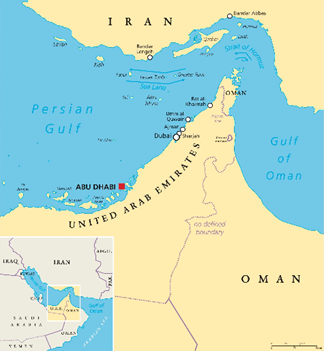 About:
About:
- The strait is located at the mouth of the Persian Gulf and is crucial to global energy supplies, with about a fifth of all oil traded at sea passing through it.
- The waterway separates Iran and Oman, linking the Persian Gulf to the Gulf of Oman and the Arabian Sea.
- Most crude exported from Saudi Arabia, Iran, the UAE, Kuwait and Iraq – all members of the Organization of the Petroleum Exporting Countries (OPEC) – is shipped through this waterway.
- It is also the route used for nearly all the Liquefied Natural Gas (LNG) produced by the world’s biggest LNG exporter, Qatar.
https://m.economictimes.com/news/defence/iran-holds-military-drill-near-strategic-strait-of-hormuz/articleshow/96620356.cms
No confidence Motion - Edukemy Current Affairs
Why in news? Recently, Opposition MLAs in Maharashtra have moved a no confidence motion against assembly speaker.
About:
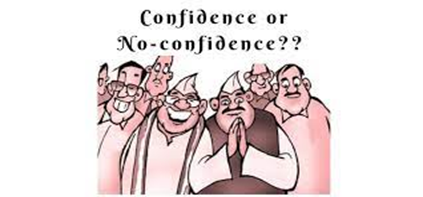
- A no-confidence motion is a parliamentary motion which is moved in the Lok Sabha against the entire council of ministers.
- No prior reason needs to be stated for its adoption in the Lok Sabha.
- A motion of “No Confidence Motion” against the Government can be introduced only in the Lok Sabha under rule 198.
- The Constitution of India does not mention about either a Confidence or a No Confidence Motion.
- Although, Article 75 does specify that the Council of Ministers shall be collectively responsible to the Lok Sabha.
- A motion of No Confidence can be admitted when a minimum of 50 members, support the motion in the house.
https://m.economictimes.com/news/politics-and-nation/maharashtra-opposition-moves-no-confidence-motion-against-speaker-rahul-narwekar/amp_articleshow/96630701.cms
Mutual Legal Assistance Treaty (MLAT)
Why in news? Recently, India and Saudi Arabia are in talks to sign a MLAT to obtain formal assistance from each other in investigations related to criminal cases.
About:
- The MLATs in criminal matters are the bilateral treaties entered between the countries for providing international cooperation and assistance.
- These agreements allow for the exchange of evidence and information in criminal and related matters between the signing countries.
- So far, India has signed MLATs with 45 countries, but Saudi is one of the many other countries with whom India does not have an MLAT.
- The countries that do not share such a mechanism serve summons, notices and judicial processes on the basis of an "assurance of reciprocity".
https://www.thehindu.com/news/national/india-saudi-arabia-discuss-treaty-on-mutual-assistance-for-criminal-investigations/article66320892.ece/amp/
Macro stress test of RBI - Edukemy Current Affairs
Why in news? The central bank's latest Financial Stability Report (FSR) indicates that in a baseline scenario, the gross non-performing assets in the banking system will improve to 4.9% by September 2023.
About:
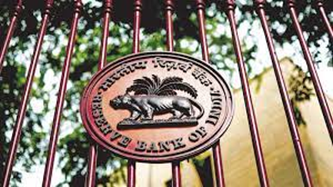
- Marco-stress testing on the banking sector is undertaken to assess the resilience of the banking system to exceptional but plausible stress events.
- These tests cover credit risk, interest rate risk, liquidity risk and the resilience of commercial banks in response to these shocks.
- Generally, RBI considers three scenarios for stress tests:
- baseline and two adverse - medium and severe scenarios.
https://m.economictimes.com/news/economy/policy/indian-lenders-strong-enough-to-counter-worst-of-macro-stress-rbi/amp_articleshow/96605198.cms
Kalasa banduri nala Project - Edukemy Current Affairs
Why in news? Recently, Center has given its nod for the Detailed Project Report (DPR) of the Kalasa Banduri Nala Project.
About:
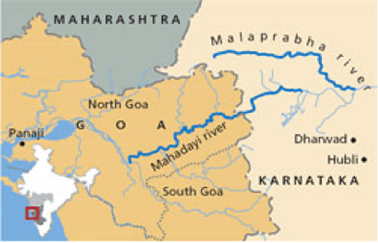
- It is undertaken by the Government of Karnataka to improve drinking water supply to the three districts of Belagavi, Dharwad, and Gadag.
- It involves building across Kalasa and Banduri, two tributaries of the Mahadayi river to divert water to the Malaprabha river (a tributary of Krishna River).
- Malaprabha river supplies the drinking water to Dharwad, Belgaum, and Gadag districts.
- Kalasa-Banduri project was planned in 1989.
https://www.deccanchronicle.com/amp/nation/politics/301222/centre-gives-nod-for-dpr-of-kalasa-banduri-nala-project.html
Citizenship norms - Edukemy Current Affairs
Why in news? The Centre has issued application guidelines for those whose parents had renounced Indian citizenship when they were minors but now want to reclaim their nationality.
About:
- Citizenship is listed in the Union List under the Constitution and thus is under the exclusive jurisdiction of Parliament.
- The Constitution does not define the term ‘citizen’ but details of various categories of persons who are entitled to citizenship are given in Part 2 (Articles 5 to 11).
- As per Section 8 (2) of Indian Citizenship Act, 1955, "every minor child of a person who renounces their citizenship under Section 8(1), shall, thereupon, cease to be a citizen of India. Provided that any such child may, within one year after attaining full age, make a declaration that he wishes to resume Indian citizenship..."
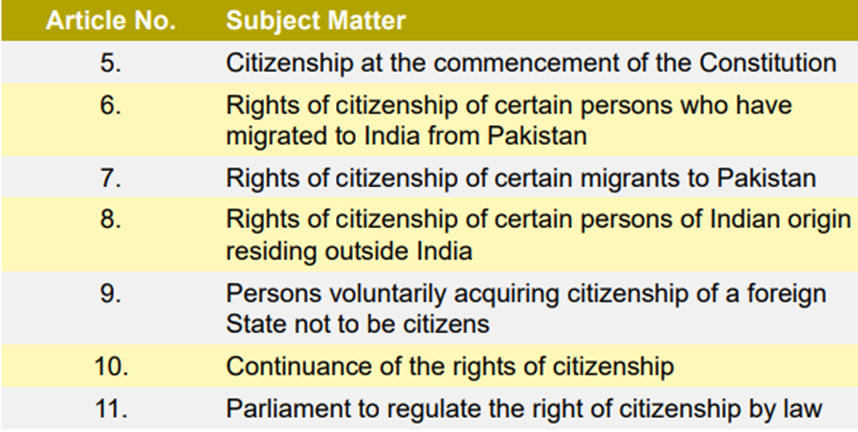
https://m.economictimes.com/news/india/parents-had-renounced-citizenship-but-children-want-it-govt-issues-norms/amp_articleshow/96605082.cms
Mettur Dam - Edukemy Current Affairs
In News: Recently inflow into Mettur dam increased to 4,081 cusecs.
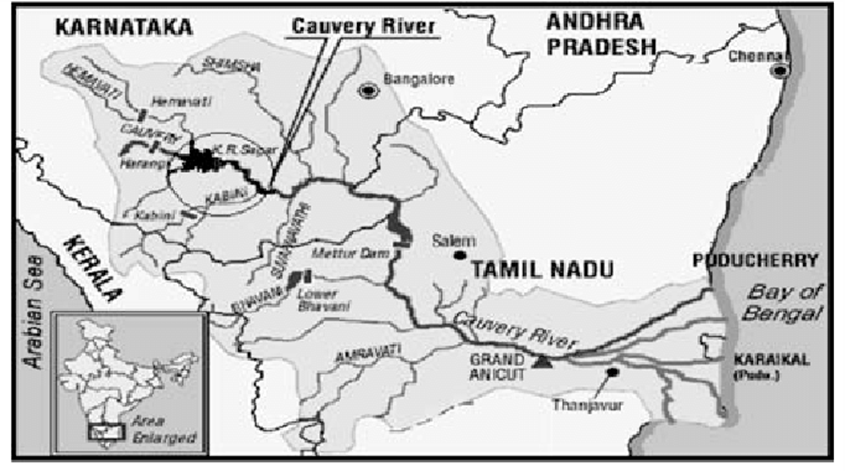
Mettur Dam, also known as Stanley Reservoir; is constructed in a gorge, where the Cauvery River enters the plains. It is located at Mettur, district Salem in Tamil Nadu and is one of the largest dams in the with a total length of 1700 meters.
Historical background: The construction work was commenced in the year 1925. The project was completed in 1934 under Sir George Stanley, the Governor of Madras.
Objectives
- It provides irrigation facilities for farmland in parts of Salem, Erode, Namakkal, Karur, Tiruchirappali and Thanjavur district.
- Hydroelectric and thermal power plant provide energy security for the industry.
- Its installed capacity for hydro-power generation is 32 MW.
- The Mettur dam catchment is intercepted by other projects viz. Krishna Raja Sagar Reservoir, Harangi Reservoir, Kabini Reservoir, Hemavathy Reservoir, Gundal Reservoir, Suvarnavatty Reservoir, Kanva Reservoir, Chinnar Dam etc.
- The Dam Rehabilitation and Improvement Project Phase II and III initiated by Ministry of Jal Shakti through Central Water Commission in synergy with World Bank.
- Water is included in Entry 17 of the State List.
https://www.wrd.tn.gov.in/wb_cwc/esddr_mettur_dam.pdf
https://www.thehindu.com/news/cities/Coimbatore/inflow-into-mettur-dam-increases-to-4081-cusecs/article66326882.ece#:~:text=Inflow%20into%20Stanley%20Reservoir%20in,capacity%20of%2093.47%20tmc%20ft
India Revises Small Savings Rates
Why in news? Recently, the Government of India revised rate of return on Small Savings Scheme.
Small Saving schemes have been always an important source of household savings in India. All small savings collections are credited to National Small Savings Fund which is administered by Ministry of Finance (Department of Economic Affairs) under National Small Savings Fund (Custody and Investment) Rules, 2001, framed by the President under Article 283(1) of the Constitution.
All deposits under small savings schemes are credited to NSSF which are then invested in State Government Securities and Central Government Securities.
Small savings instruments can be classified under three heads. These are:
- Postal deposits: comprising savings account, recurring deposits, time deposits of varying maturities and monthly income scheme
- Savings certificates: National Small Savings Certificate VIII (NSC) and Kisan Vikas Patra (KVP)
- Social security schemes: Public Provident fund (PPF) and Senior Citizens‘ Savings Scheme (SCSS)
Interest rates on small savings schemes are revised on a quarterly basis, in line with the movement in benchmark government bonds of similar maturity by the Ministry of Finance.
- The Shyamala Gopinath panel (2010) had suggested a market-linked interest rate system for small savings schemes.
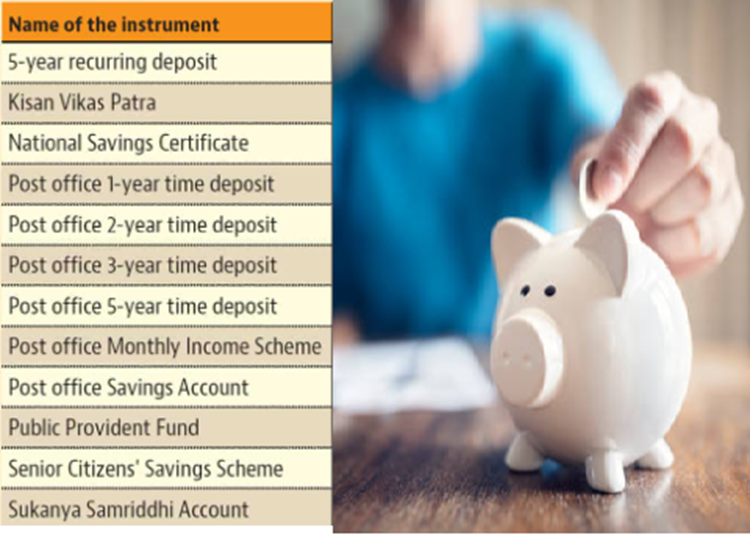
Source:
https://www.thehindu.com/opinion/editorial/a-broken-formula-the-hindu-editorial-on-the-hike-in-small-savings-rates/article66327515.ece
http://www.arthapedia.in/index.php?title=National_Small_Savings_Fund
Uniform Civil Code Debate - Edukemy Current Affairs
Exam View: Uniform Civil Code, Status of Uniform Codes in India, Article 44, Article 37, Significance and need of UCC, Major issues with UCC.
In News:
-
- Periodically, debates around the enactment and implementation of a Uniform Civil Code (UCC) flare up, both in our legislatures and the public sphere.
- UCC is envisaged to provide for one law for the entire country, applicable to all religious communities in their personal matters such as marriage, divorce, inheritance, adoption etc.
- Article 44 of the Constitution lays down that the state shall endeavour to secure a UCC for the citizens throughout the territory of India. Article 44 is one of the Directive Principles of State Policy (DPSP).
- The purpose behind Article 44 is to strengthen the object of "secular democratic republic" as enshrined in the Preamble of the Constitution.
- The origin of the UCC dates back to colonial India when the British government submitted its report in 1835 stressing the need for uniformity in the codification of Indian law relating to crimes, evidence, and contracts, specifically recommending that personal laws of Hindus and Muslims be kept outside such codification.
- An increase in legislation dealing with personal issues at the far end of British rule forced the government to form the B N Rau Committee to codify Hindu law in 1941.
Status of Uniform Codes in India:
 Constitutional Provisions:
Constitutional Provisions:
-
- Article 44: The “State shall endeavour to provide for its citizens a uniform civil code (UCC) throughout the territory of India.”
- Article 37: The “state shall endeavour by suitable legislation”, while the phrase “by suitable legislation” is absent in Article 44.
Major issues with UCC:
Constitutional Hurdle:
-
- Article 25 of Indian constitution, that seeks to preserve the freedom to practise and propagate any religion gets into conflict with the concepts of equality enshrined under Article 14 of Indian Constitution.
Diversity in personal law:
-
- Power to legislate: Under the Constitution, the power to legislate in respect of personal laws rests with both Parliament and state Assemblies. Thus, India has different personal laws from state to state. Once a legislative field is occupied by parliamentary legislation, states do not have much freedom to enact laws. Such laws would require Presidential assent under Article 254.
- Diversity in customary: Marriage among close relatives is prohibited in the north but considered auspicious in the south. Lack of uniformity in personal laws is also true of Muslims and Christians. The Constitution itself protects the local customs of Nagaland, Meghalaya and Mizoram.
- Questionable efficiency: Reforms in Hindu law have not completely removed gender Besides, the amount of land actually inherited by Hindu women is a small fraction of what they are entitled to under reformed Hindu law. Even when they inherit the land, it is invariably much less than an equal share. The power of will is used to give the entire property to sons.
Communal Politics:
-
- The demand for a uniform civil code has been framed in the context of communal politics.
- A large section of society sees it as majoritarianism under the garb of social reform.
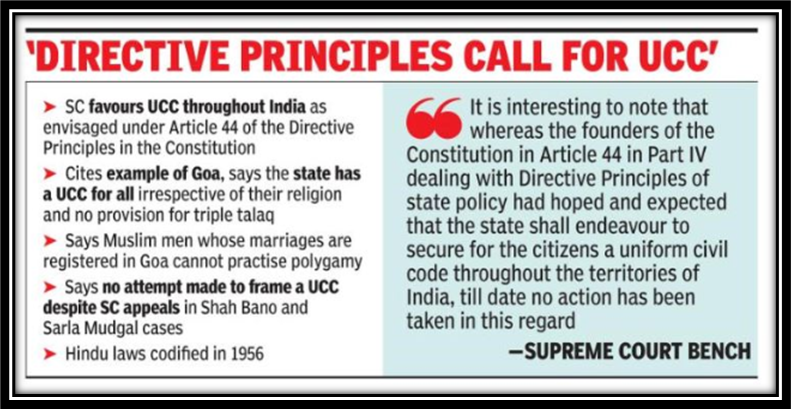
Way Forword:
-
- A uniform law, although highly desirable but may be counterproductive to the unity and integrity of the nation.
- Hence, only those elements of customs and traditions should be brought into a unified law that causes injustice to individuals.
- The government and society will have to work hard to build trust, but more importantly, make common cause with social reformers rather than religious conservatives.
- Rather than an omnibus approach, the government could bring separate aspects such as marriage, adoption, succession, and maintenance into a UCC in stages.
- The codification of all personal laws is urgently required in order to expose prejudices and stereotypes within each of them and put them to the test against the Constitution's fundamental rights.
https://www.hindustantimes.com/opinion/uniform-civil-code-reframe-the-debate-101672152817099.html
205TH ANNIVERSAY OF BHIMA KOREGAON BATTLE
Background
Police security was beefed up around the ‘Jaystambh’ and in the surrounding villages for maintaining law and order, during the January 1 programme, marking the 205th anniversary of the Battle of Koregaon Bhima.
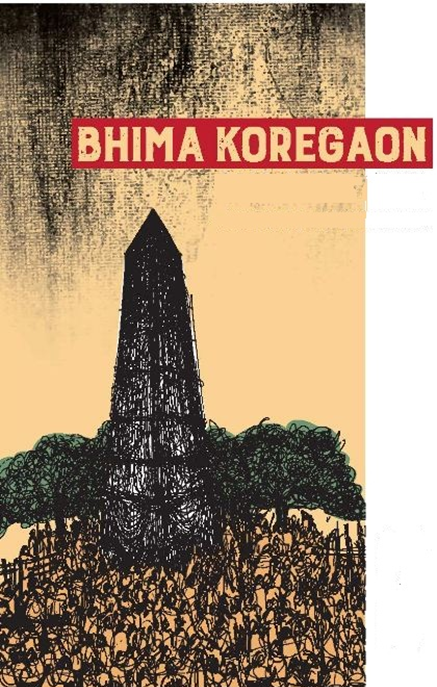 About the Battle of Koregaon Bhima
About the Battle of Koregaon Bhima
- The Battle of Bhima-Koregaon fought on 1st January, 1818, was one of the last battles of the Third Anglo-Maratha War which culminated in the Peshwa's defeat and marked an important phase of Maratha history.
- As per the narrative of Ambedkarite Dalits, a British Army comprising 500 Mahar (Scheduled community) soldiers defeated a 25,000 strong force of Peshwas (who were upper caste Brahmins) in the Battle of Koregaon Bhima.
- The battle attained a legendary stature for Dalits and became a symbol of pride, as it became to be seen as the “war for freedom” and victory against casteism and injustices perpetuated by the Brahminical Peshwas.
- A pillar, known as Vijay Sthamb (victory pillar), was installed by the East India Company in memory of those who fought for them in the battle.
- Dr Ambedkar visited the Vijay Stambh on January 1, 1927, as a part of the historic anti-British movement against the ban on the recruitment of the then untouchables in the British Army.
- This resulted in initiation of an annual tradition to commemorate the occasion on January 1, where the Dalits gather at Bhima Koregaon to pay their respect at the Vijay Sthamb.
- In 2018, incidents of violent clashes between Dalit and Maratha groups were registered during the celebration of the 200th anniversary of the Bhima-Koregaon battle. The bolstering of security is to avoid any such clashes.
Source:
https://indianexpress.com/article/cities/pune/bhima-koregaon-anniversary-jaystambh-january-1-8349576/
Share the article
Edukemy’s Current Affairs Quiz is published with multiple choice questions for UPSC exams
MCQ
Get Latest Updates on Offers, Event dates, and free Mentorship sessions.

Get in touch with our Expert Academic Counsellors 👋
FAQs
UPSC Daily Current Affairs focuses on learning current events on a daily basis. An aspirant needs to study regular and updated information about current events, news, and relevant topics that are important for UPSC aspirants. It covers national and international affairs, government policies, socio-economic issues, science and technology advancements, and more.
UPSC Daily Current Affairs provides aspirants with a concise and comprehensive overview of the latest happenings and developments across various fields. It helps aspirants stay updated with current affairs and provides them with valuable insights and analysis, which are essential for answering questions in the UPSC examinations. It enhances their knowledge, analytical skills, and ability to connect current affairs with the UPSC syllabus.
UPSC Daily Current Affairs covers a wide range of topics, including politics, economics, science and technology, environment, social issues, governance, international relations, and more. It offers news summaries, in-depth analyses, editorials, opinion pieces, and relevant study materials. It also provides practice questions and quizzes to help aspirants test their understanding of current affairs.
Edukemy's UPSC Daily Current Affairs can be accessed through:
- UPSC Daily Current Affairs can be accessed through Current Affairs tab at the top of the Main Page of Edukemy.
- Edukemy Mobile app: The Daily Current Affairs can also be access through Edukemy Mobile App.
- Social media: Follow Edukemy’s official social media accounts or pages that provide UPSC Daily Current Affairs updates, including Facebook, Twitter, or Telegram channels.

